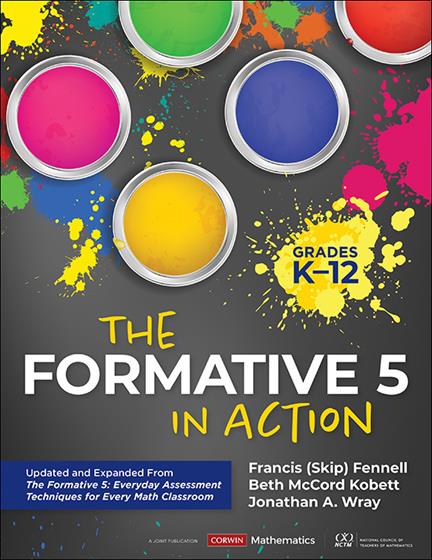Hands-on, Practical Guidance for Educators
From math,
literacy, science, equity, multilingual learners, and SEL, to assessment, school counseling,
and education leadership, our books are research-based and authored by experts
on topics most relevant to what educators are facing today.

The Formative 5 in Action, Grades K-12
A co-publication with NCTM
This book is the manual and toolkit for effective formative assessment in mathematics classrooms. Through video, work examples, reflection exercises, and more, readers leave ready to improve their planning and instructional habits and strengthen academic outcomes for students.
- Grade Level: K-12
- ISBN: 9781071910559
- Published By: Corwin
- Series: Corwin Mathematics Series
- Year: 2023
- Page Count: 216
- Publication date: August 15, 2023
Review Copies
Review copies may be requested by individuals planning to purchase 10 or more copies for a team or considering a book for adoption in a higher ed course. Request review copy




